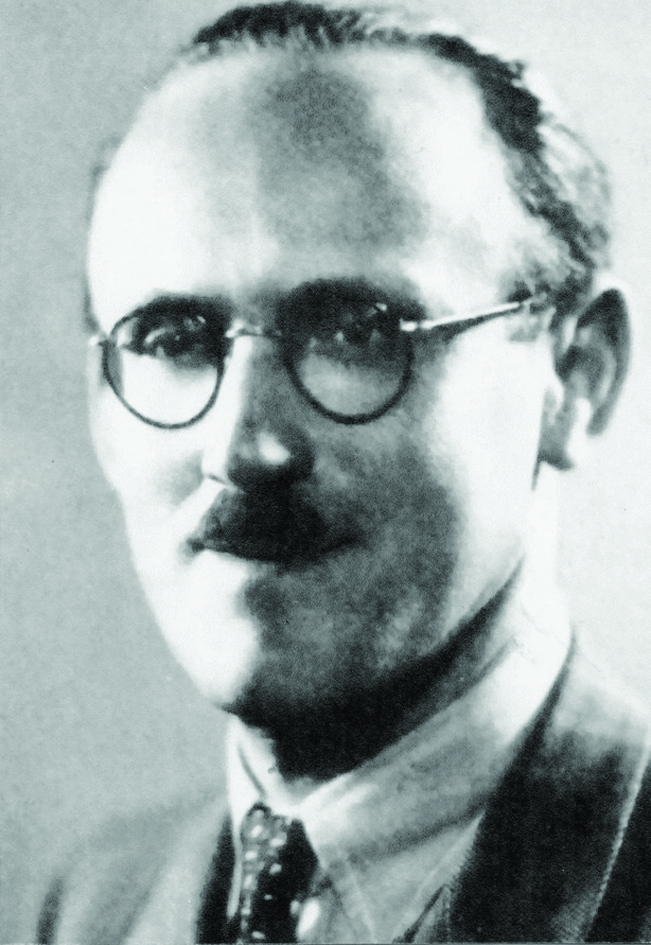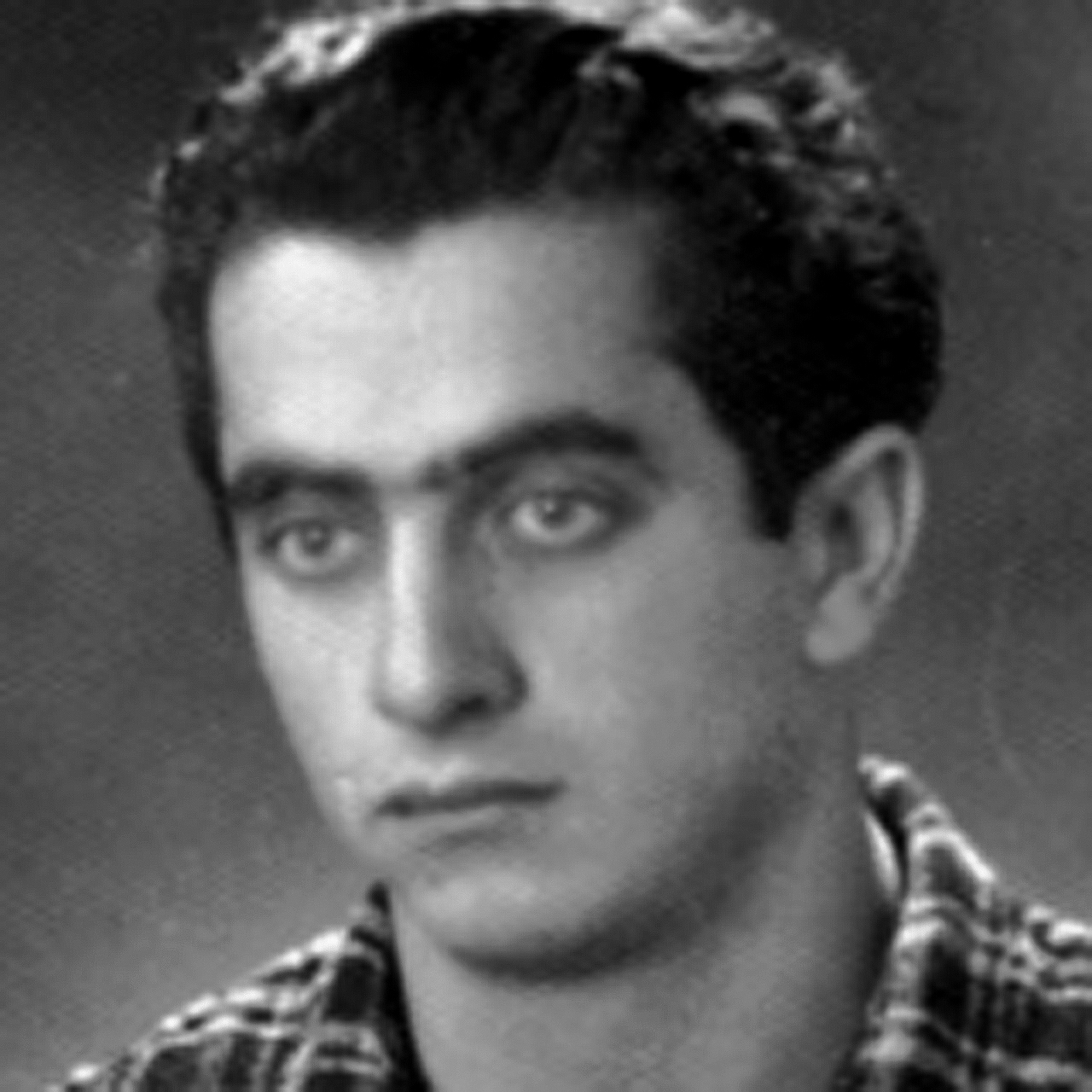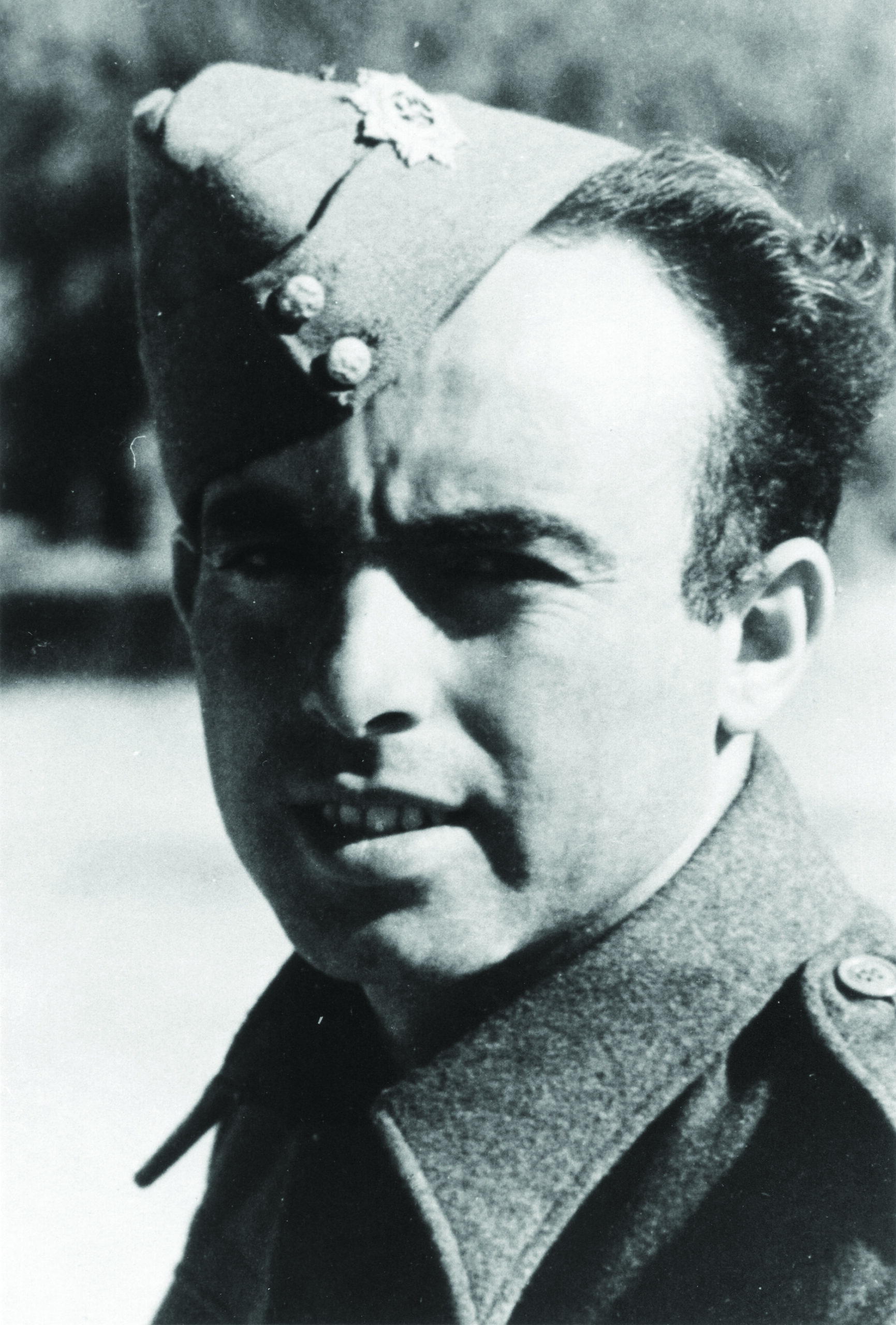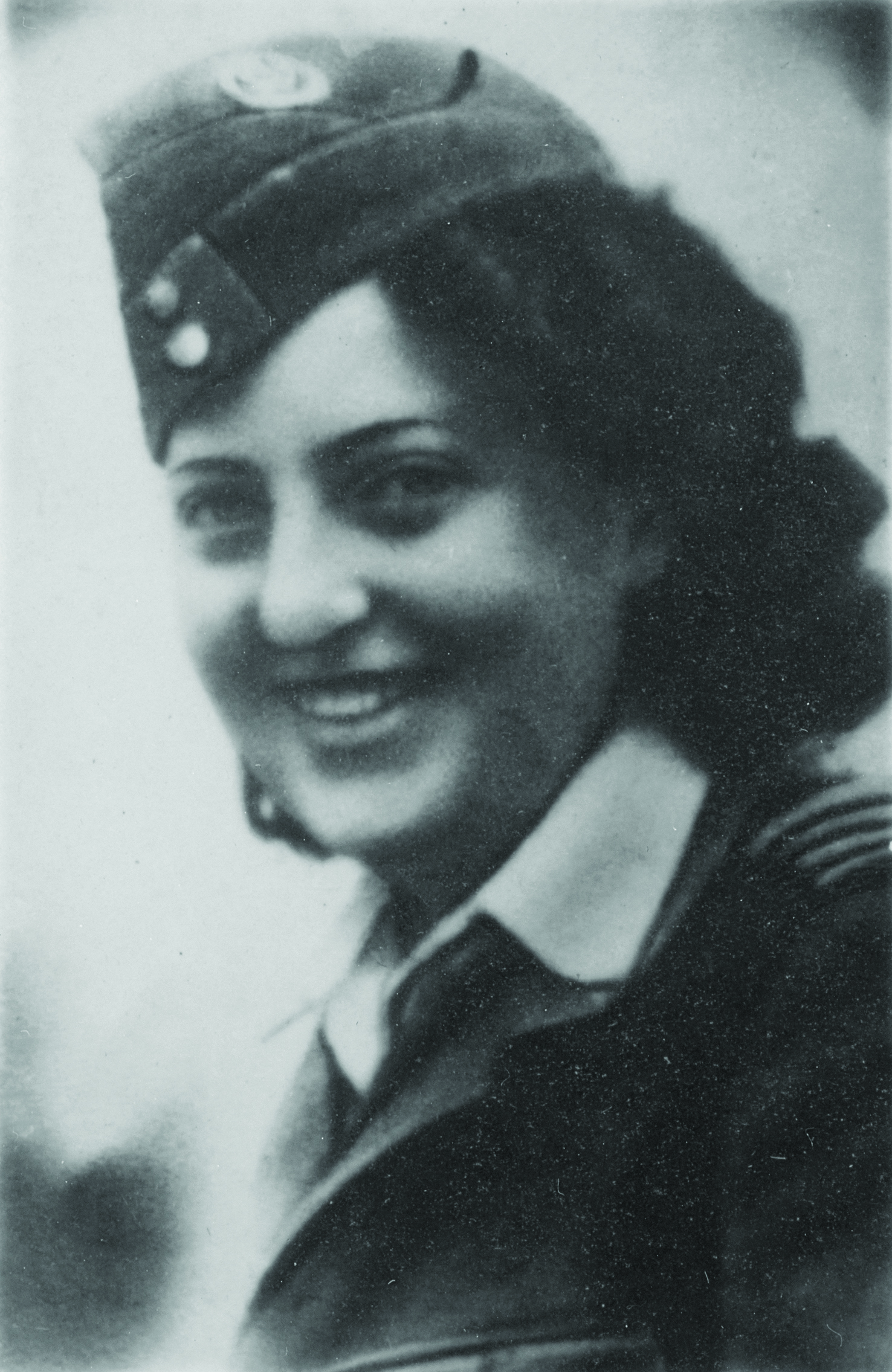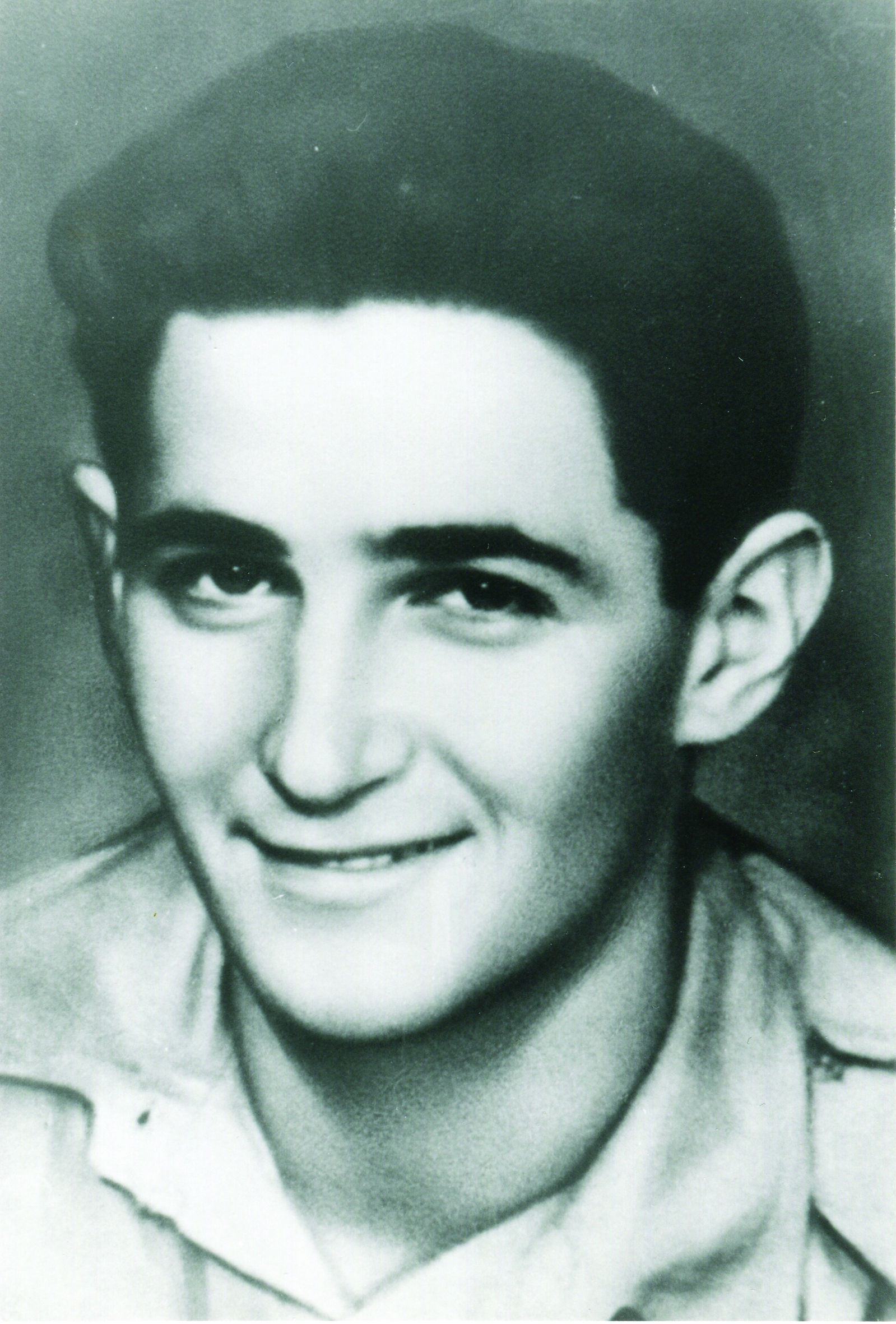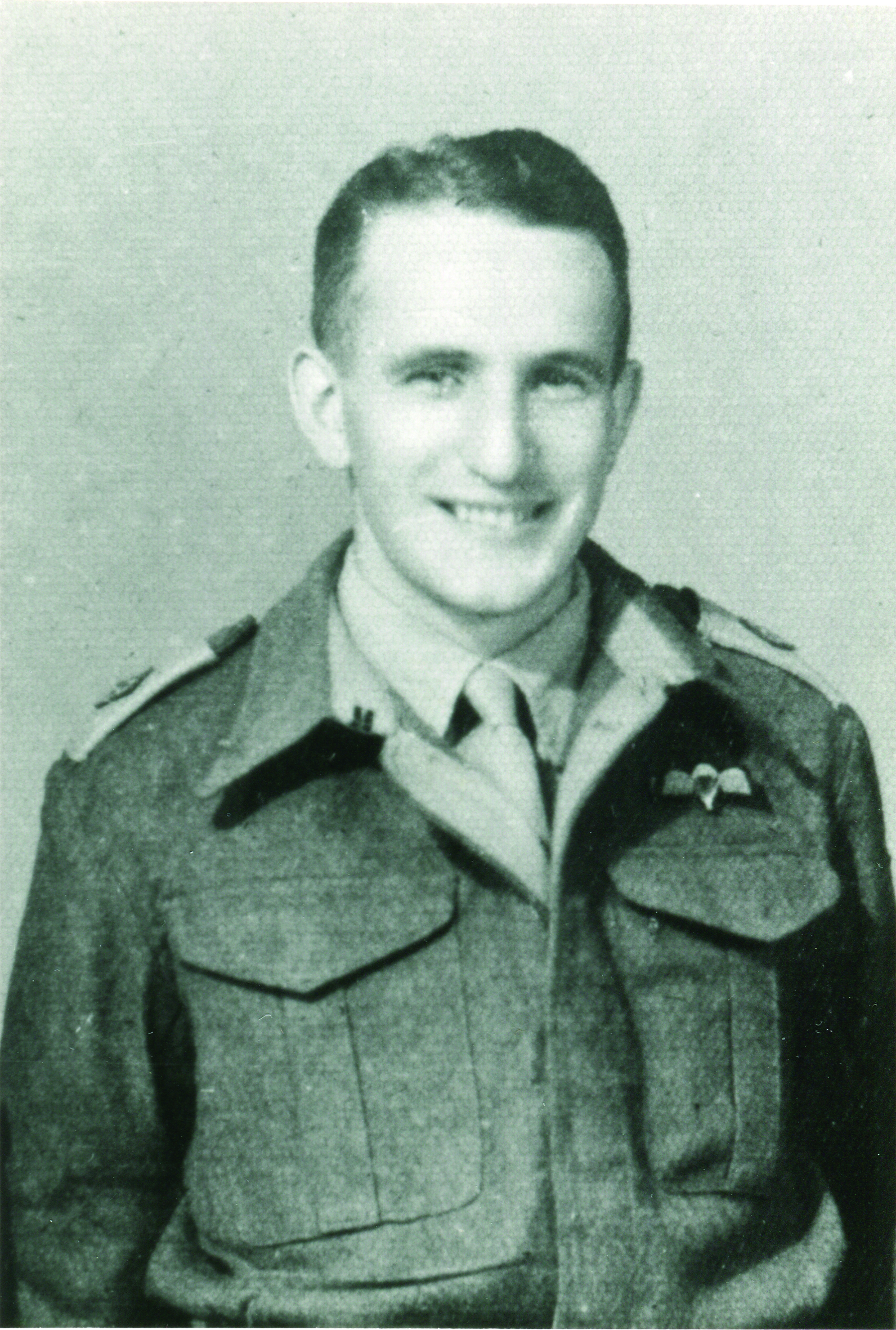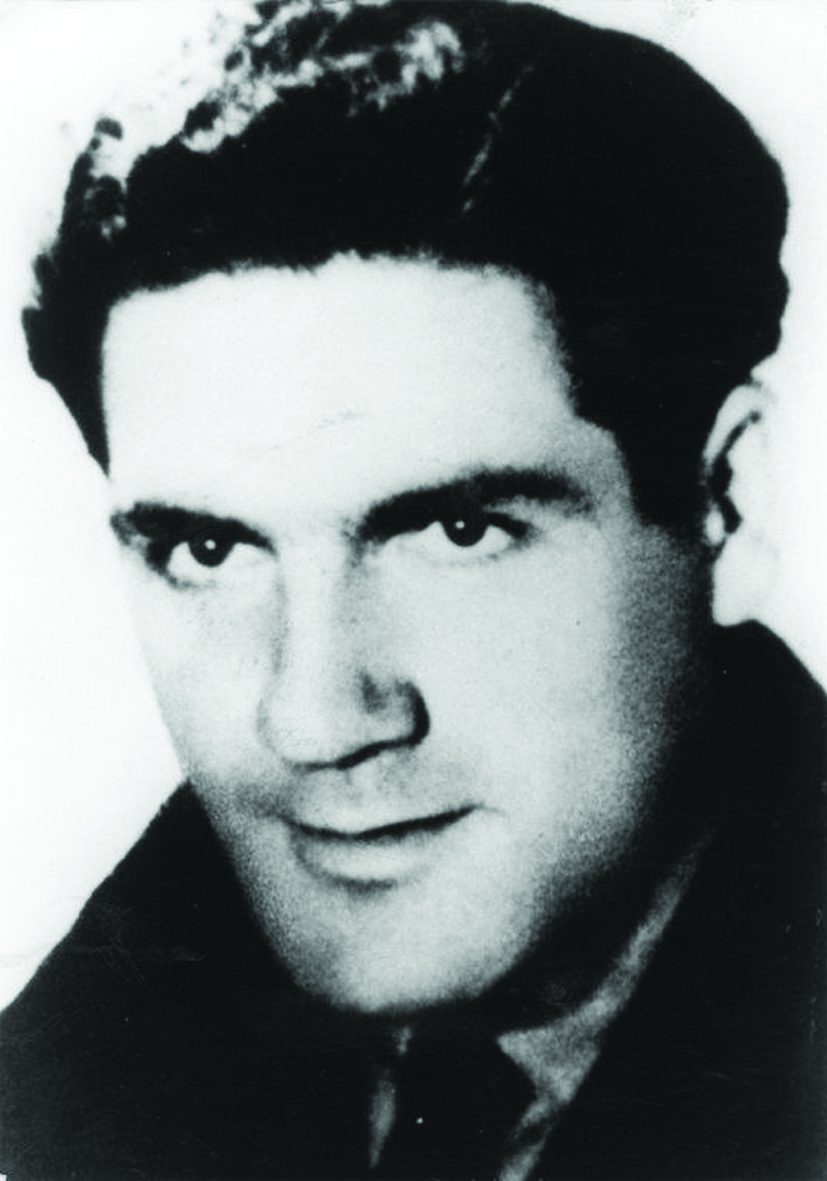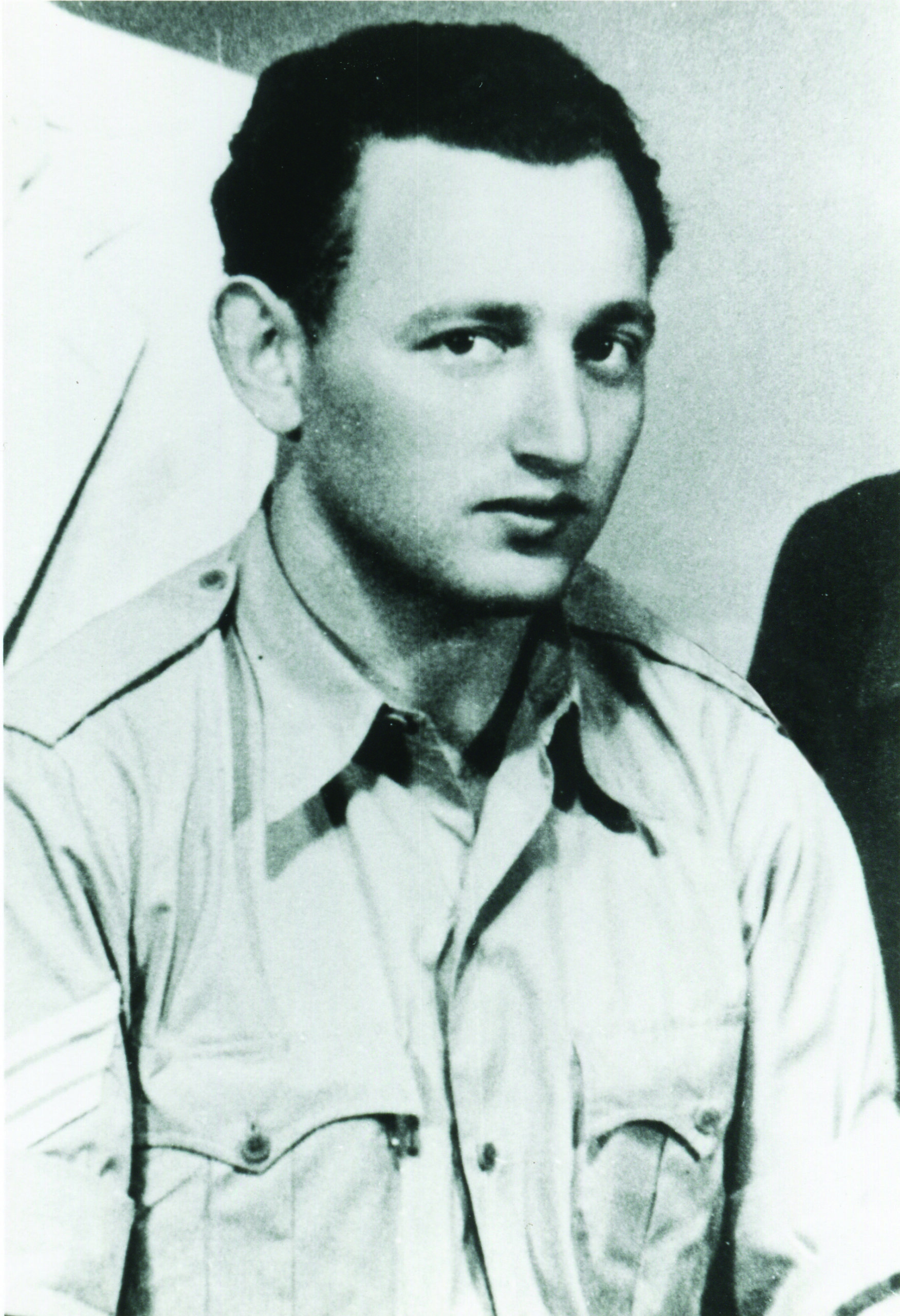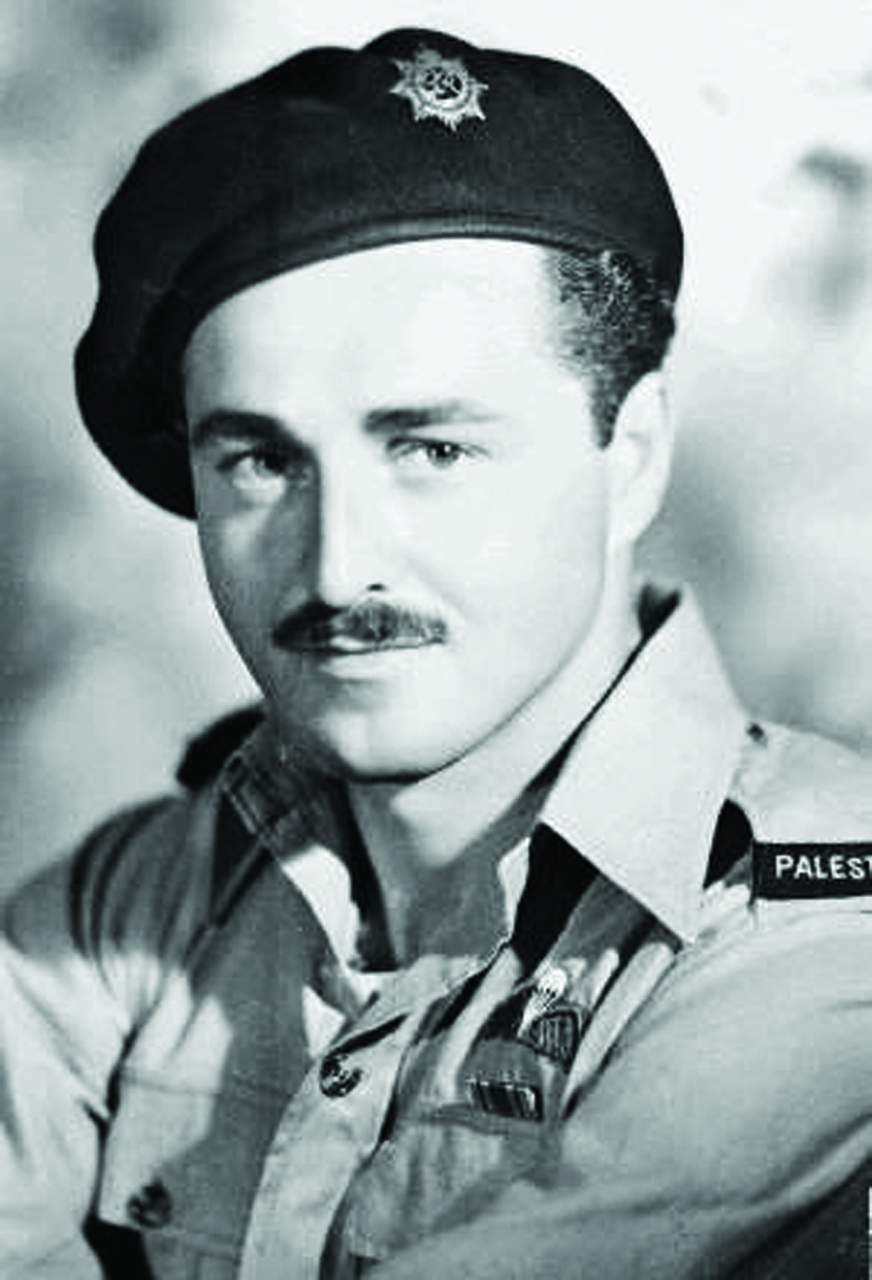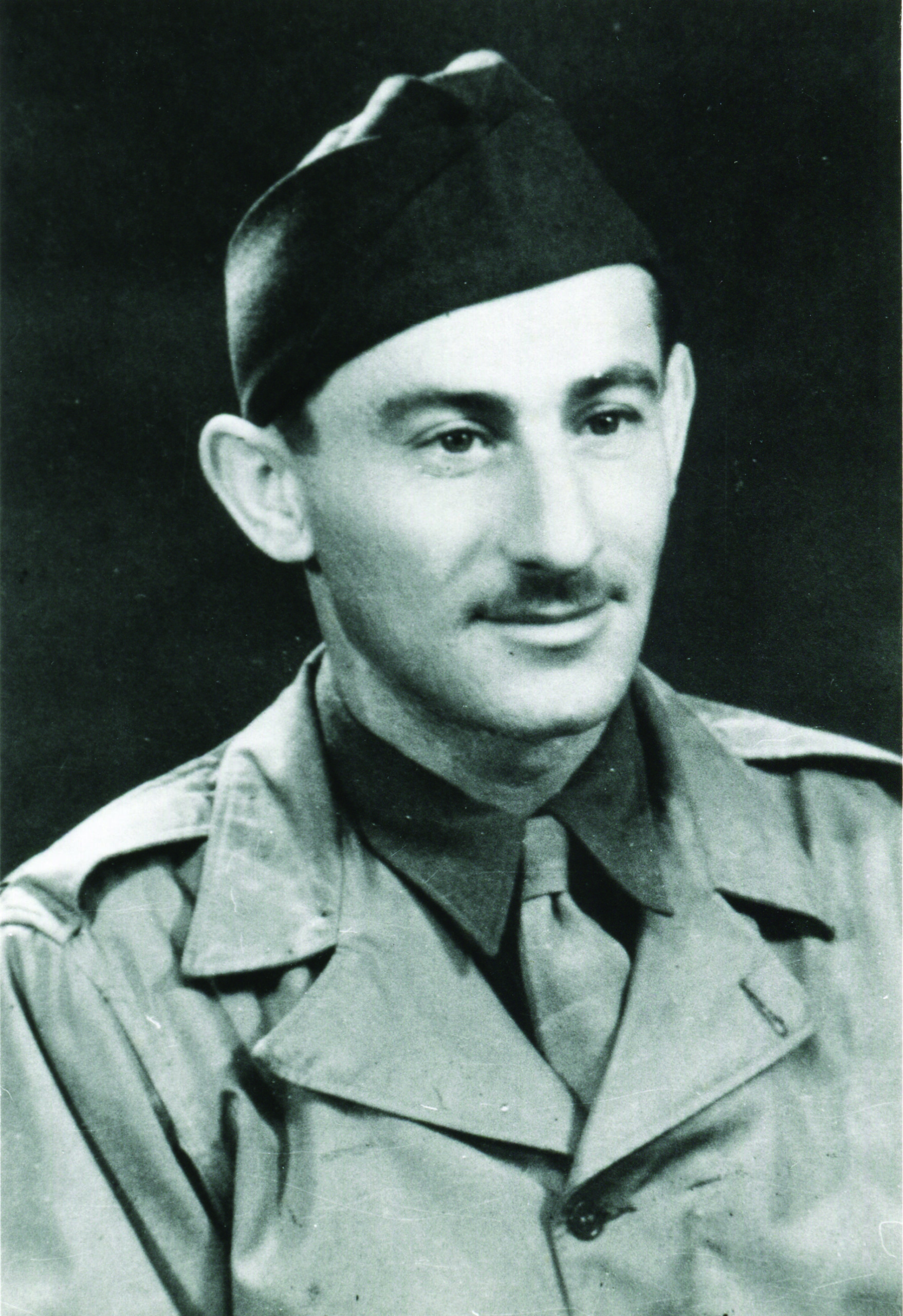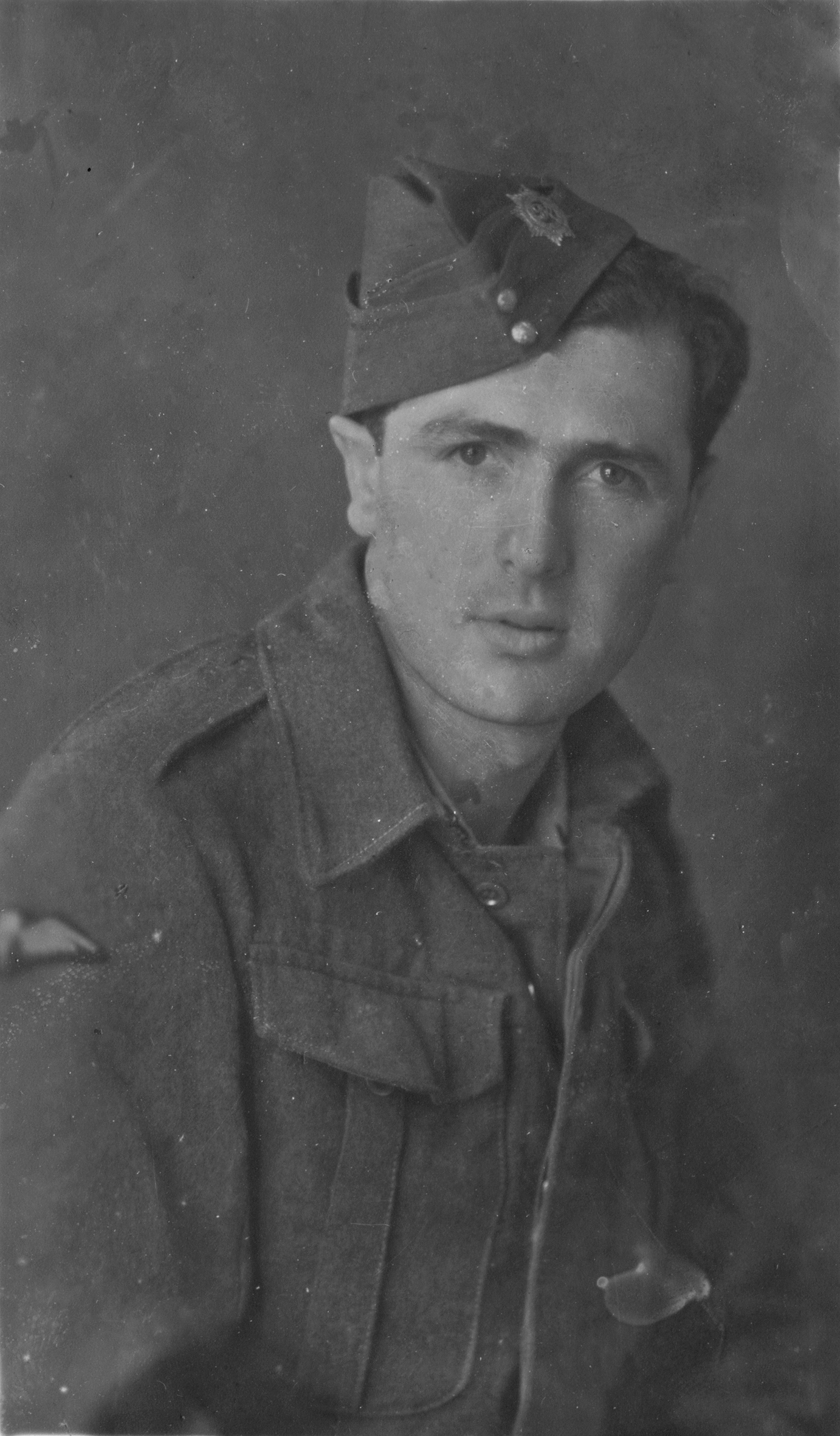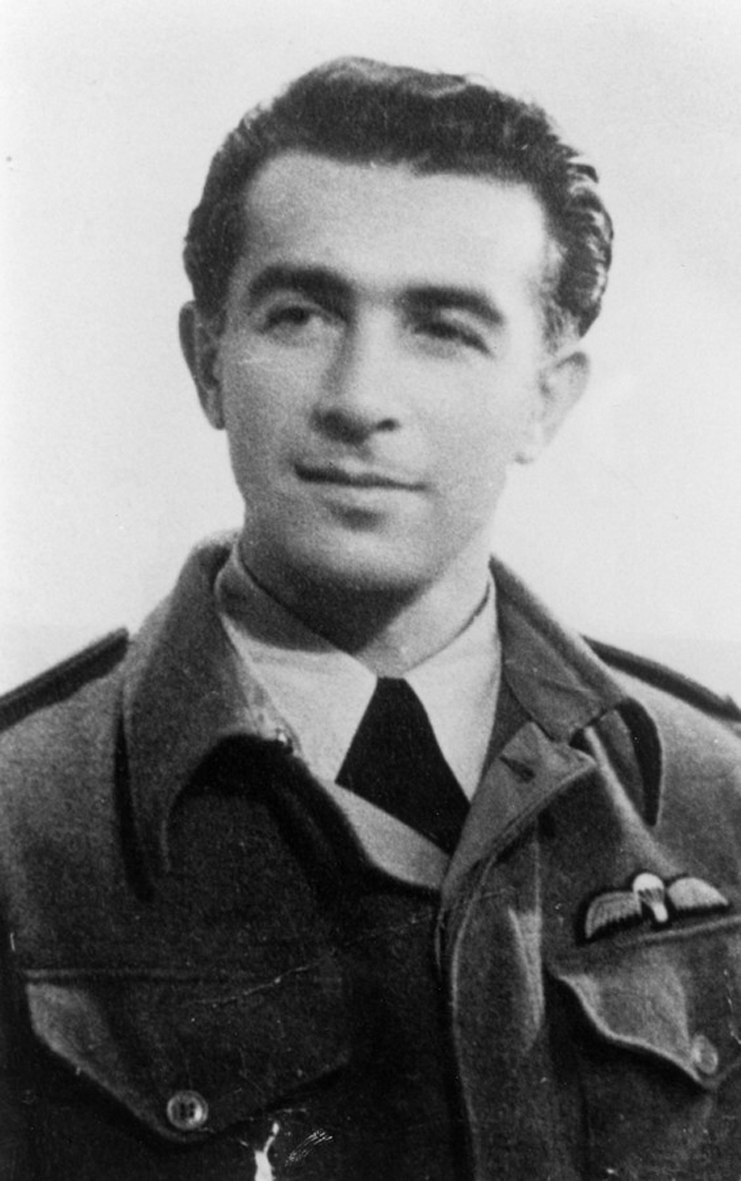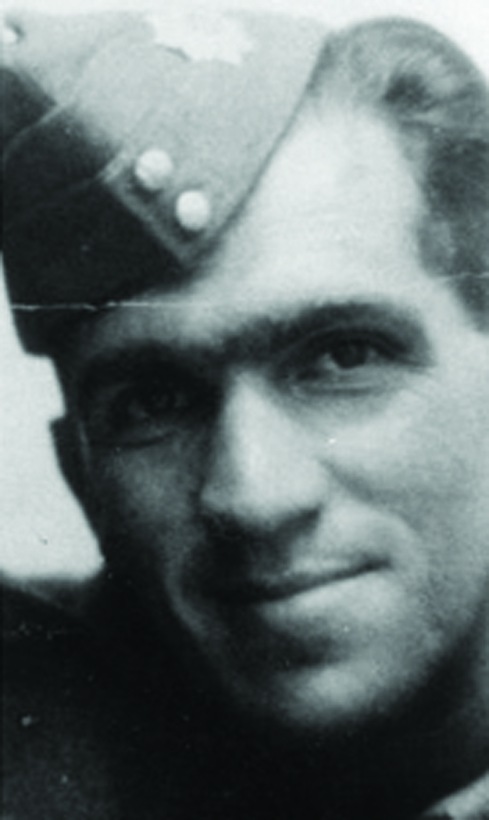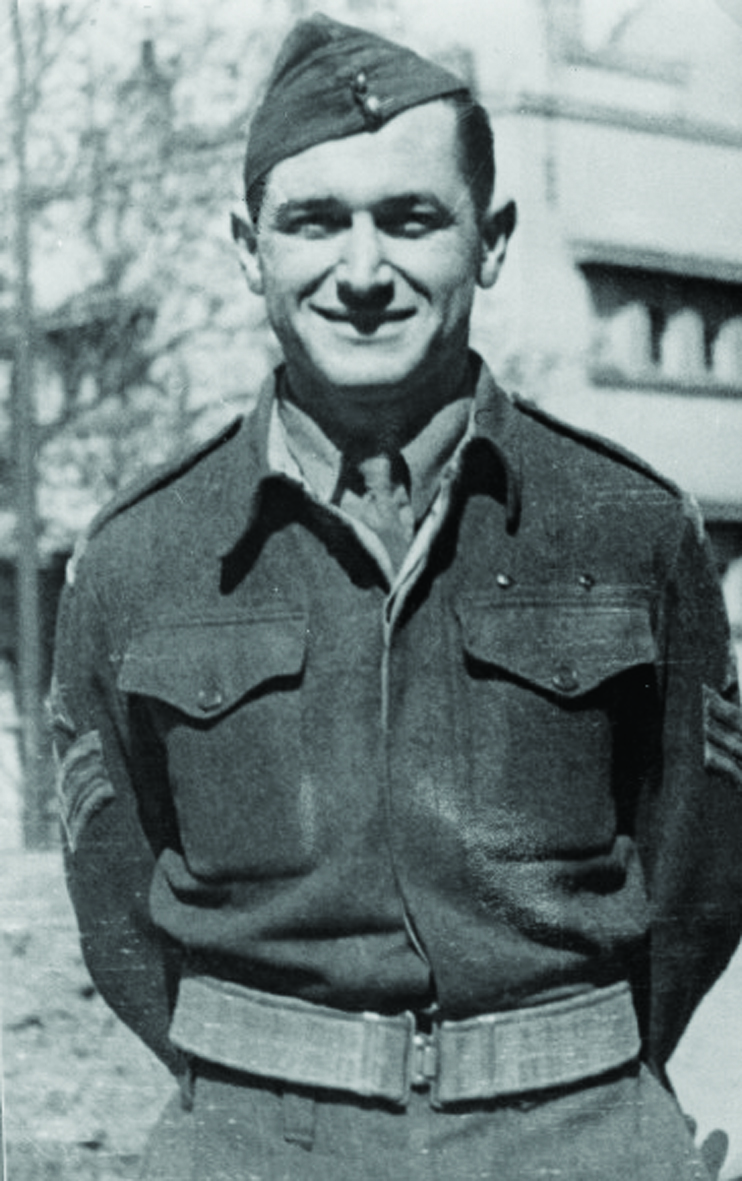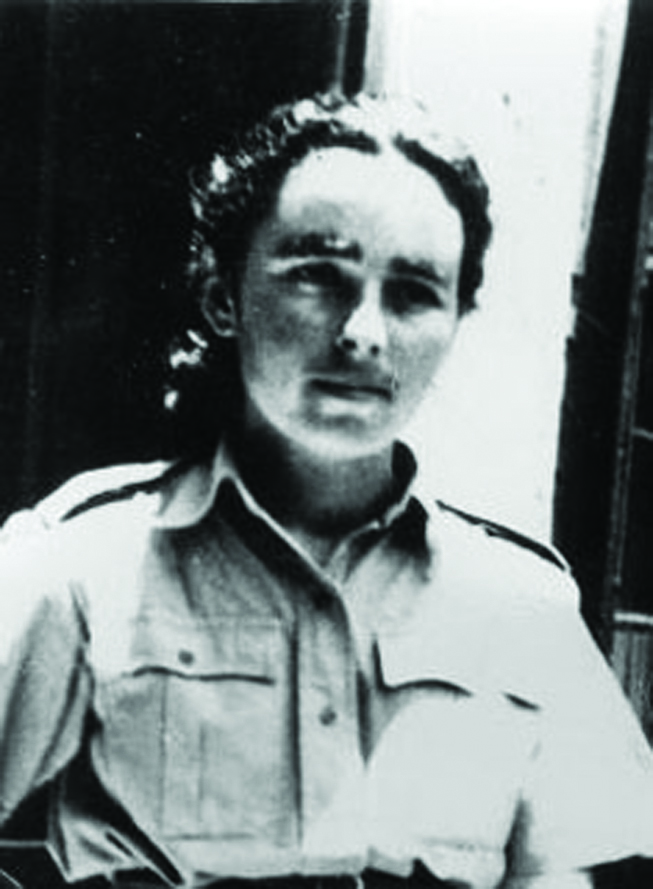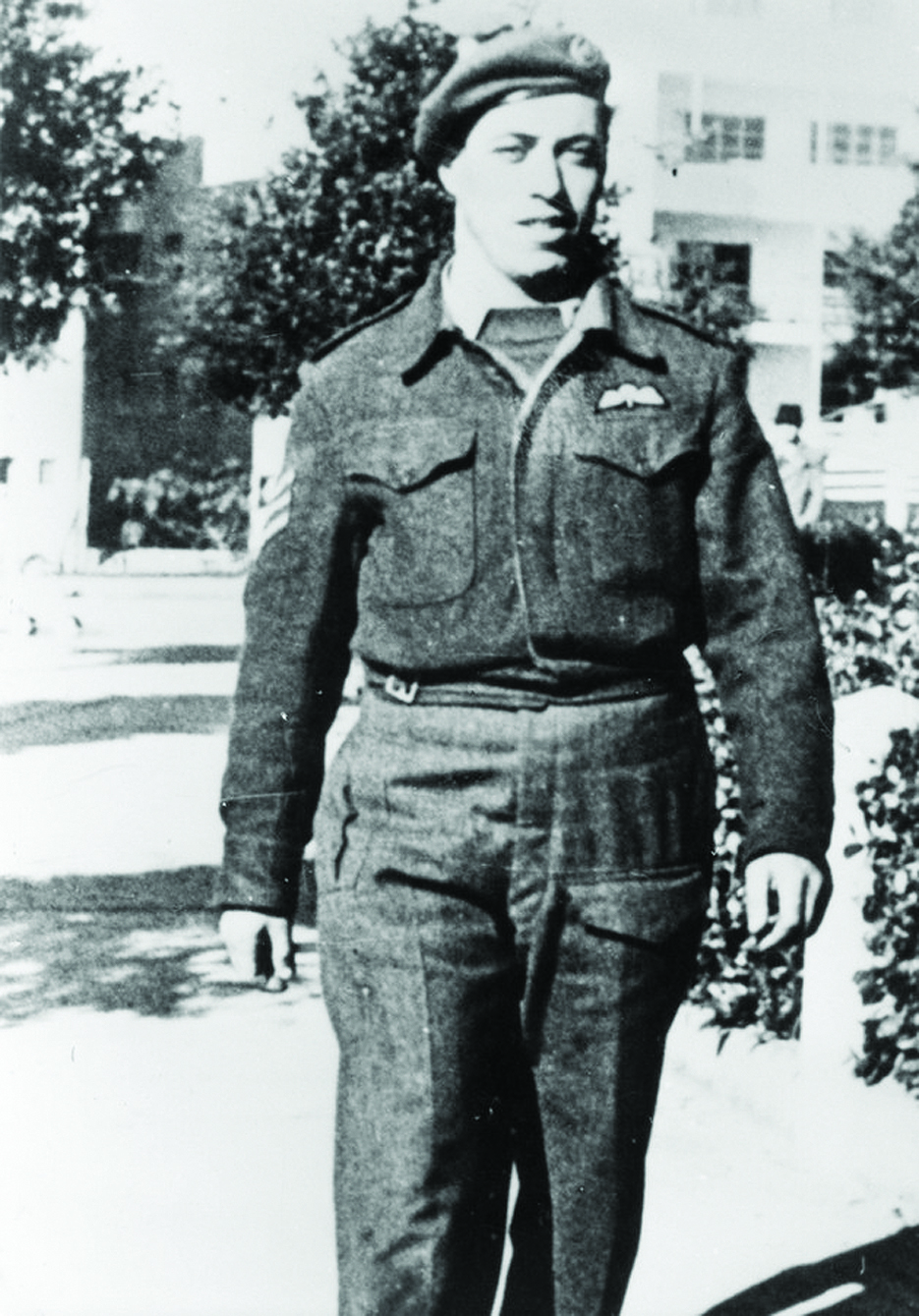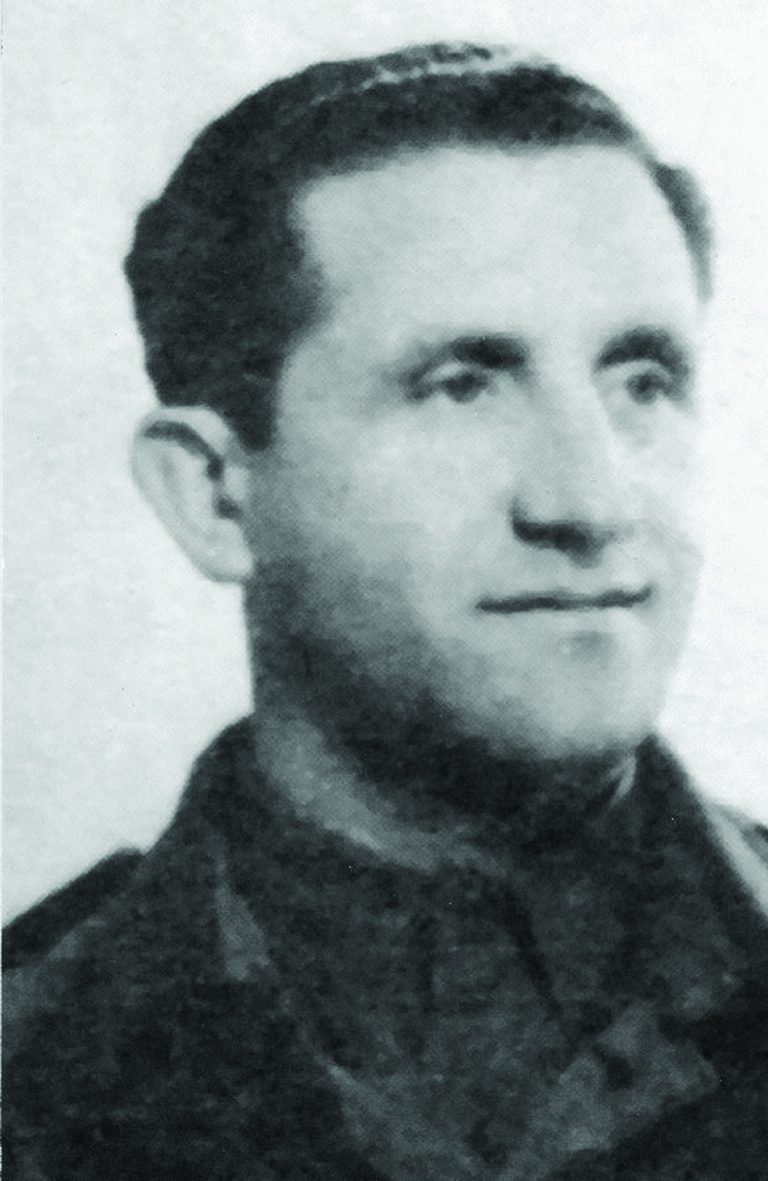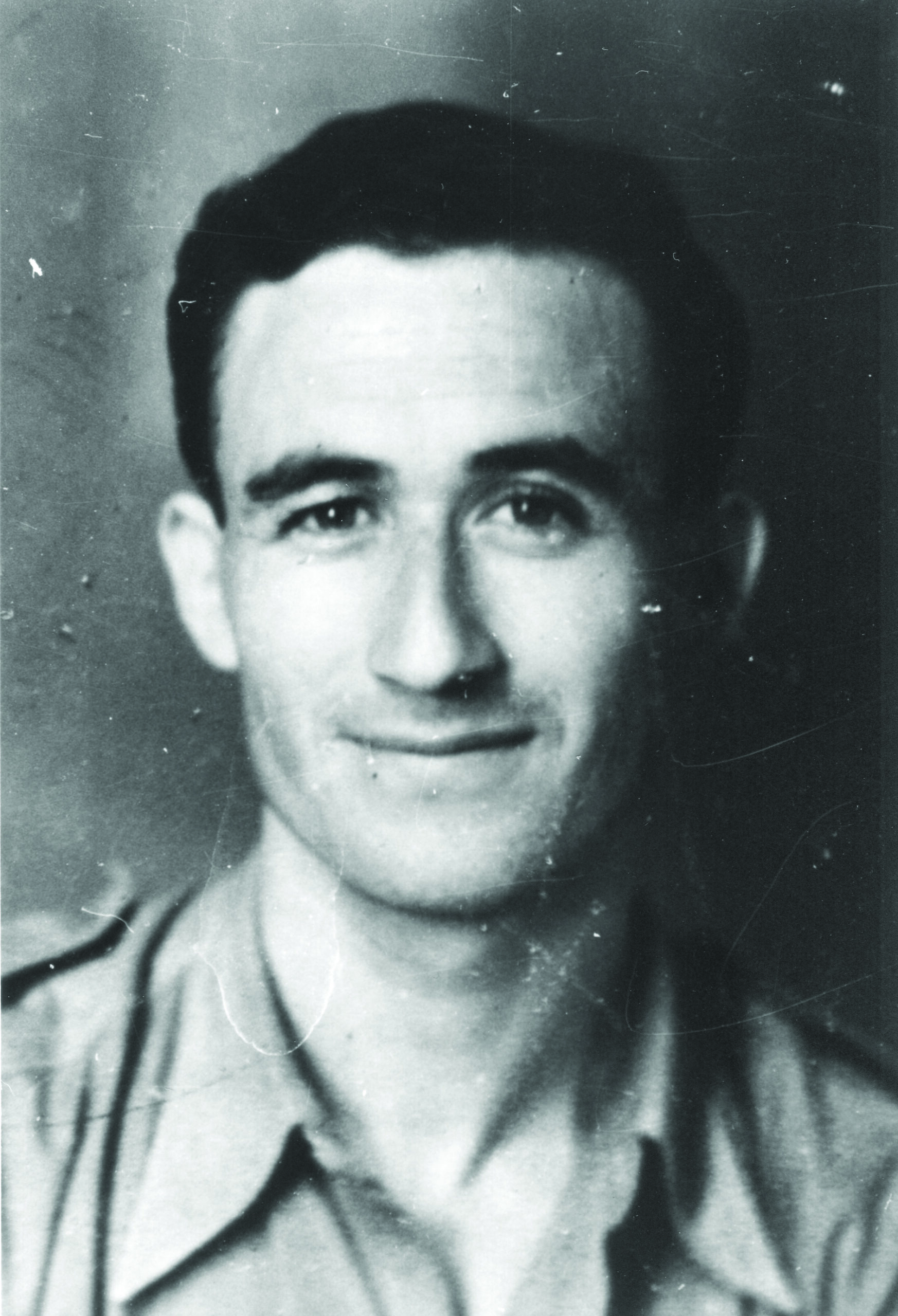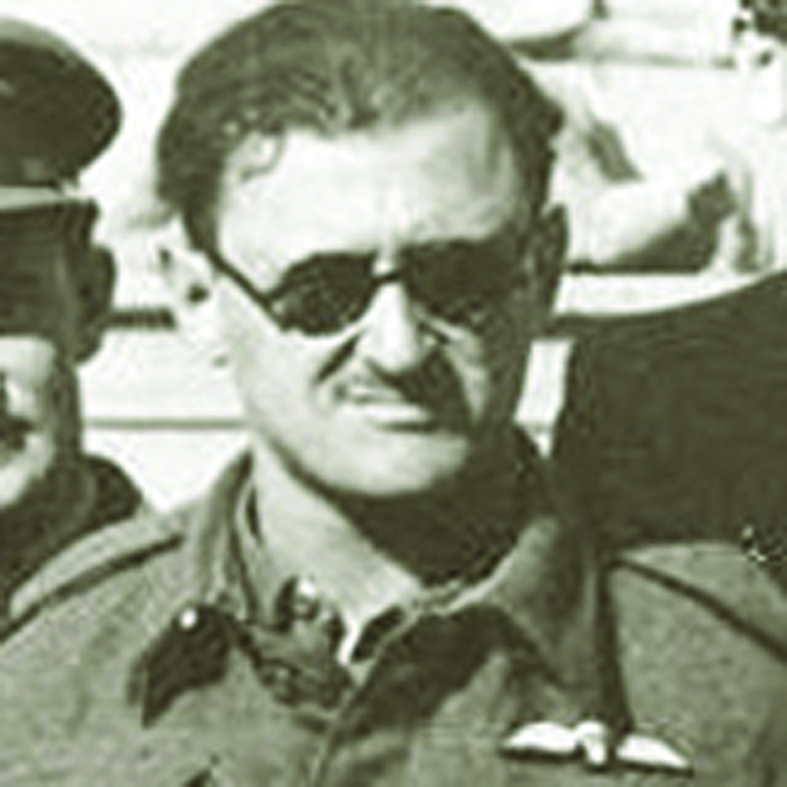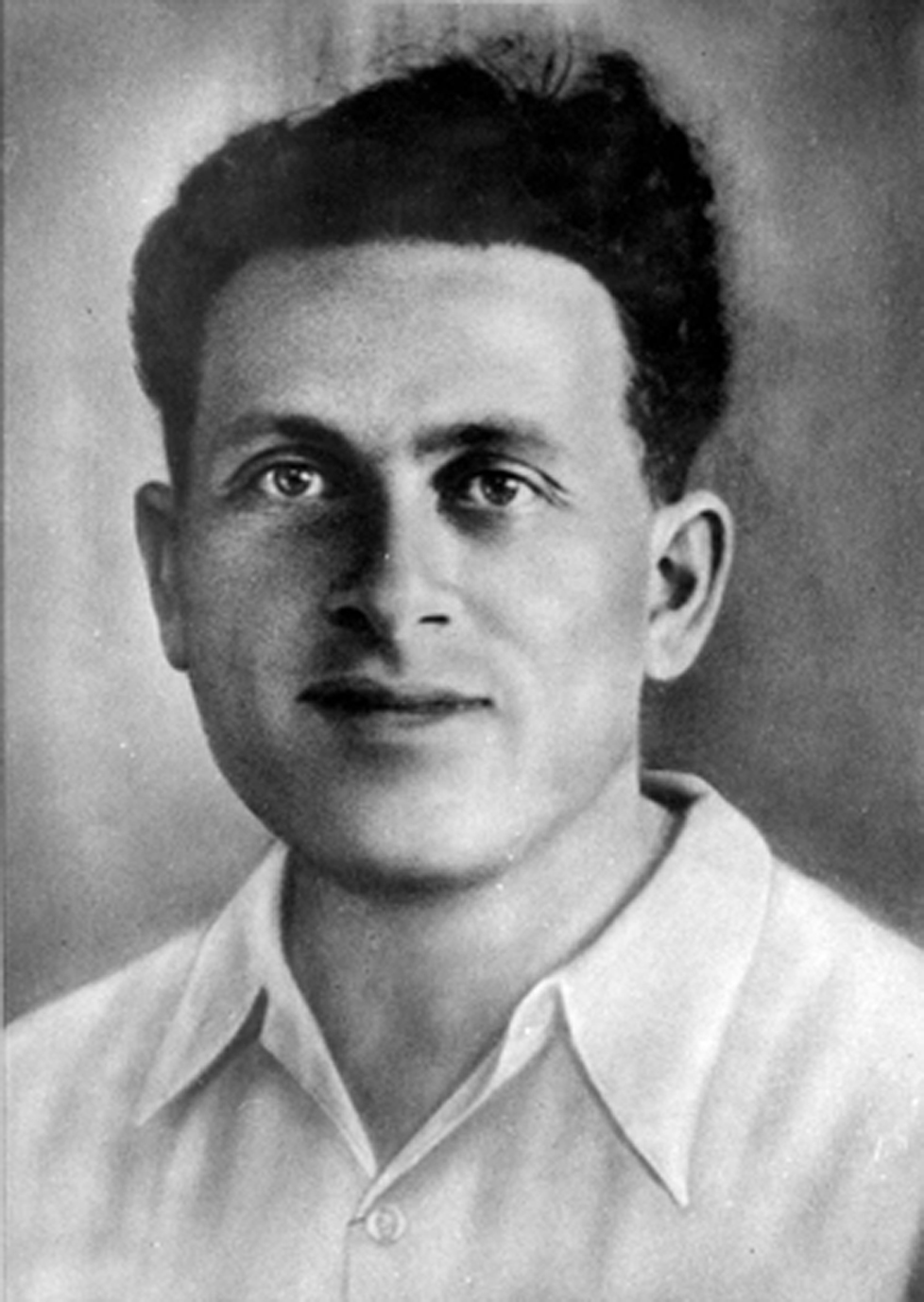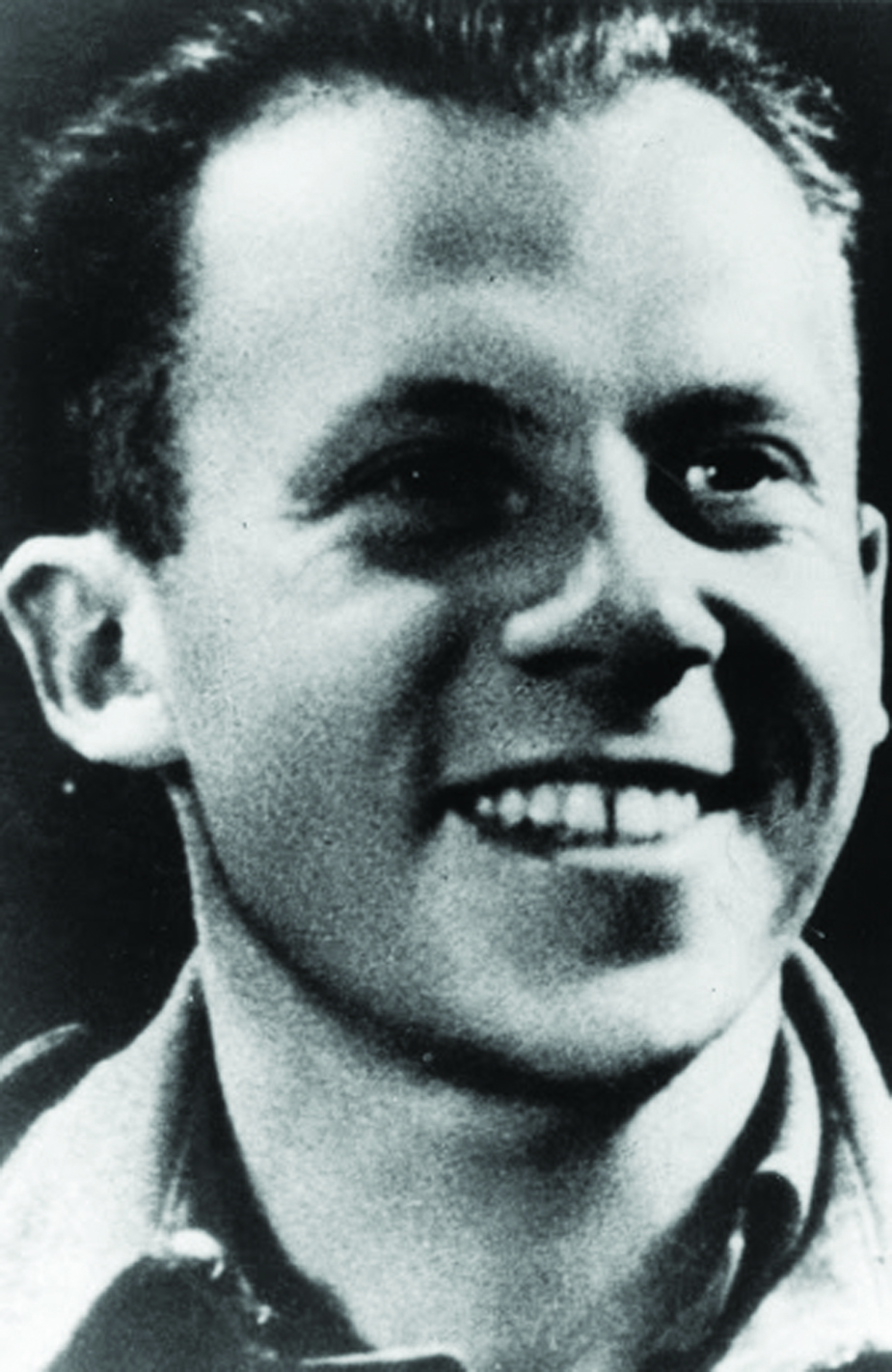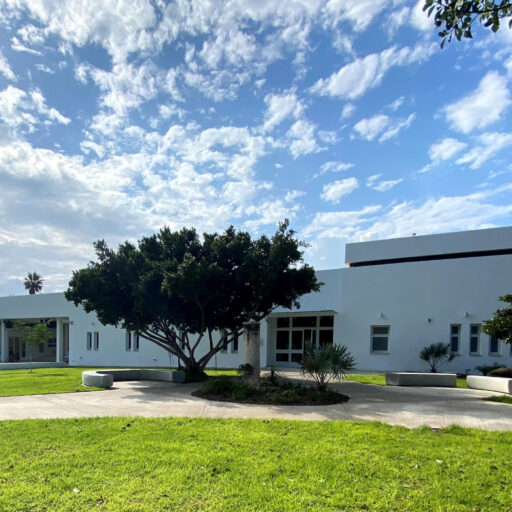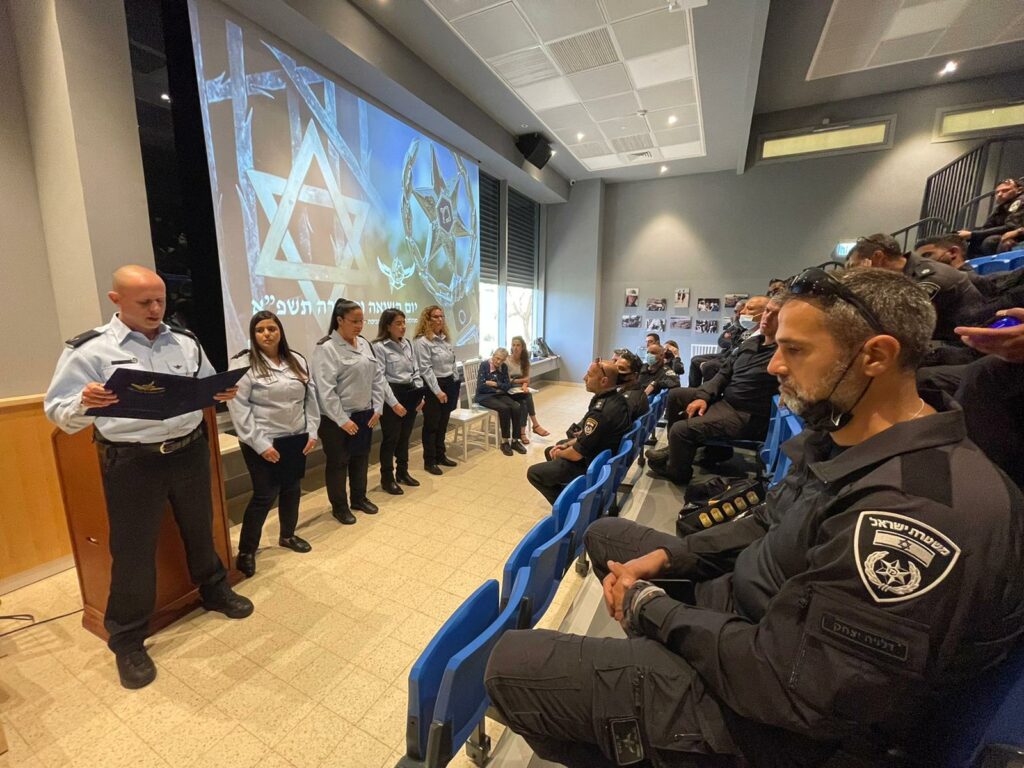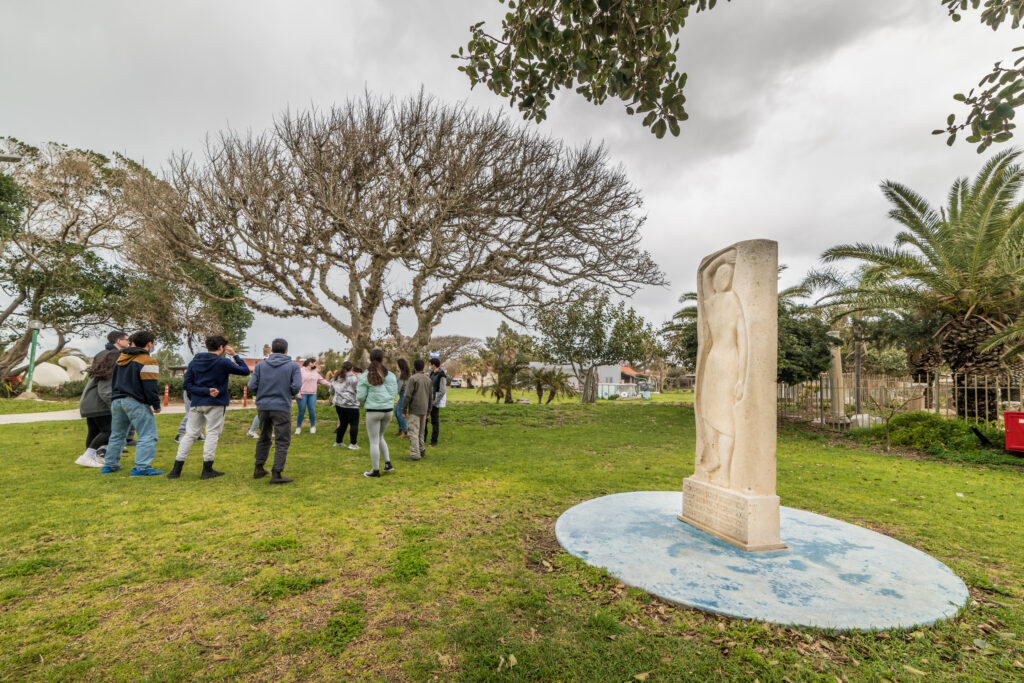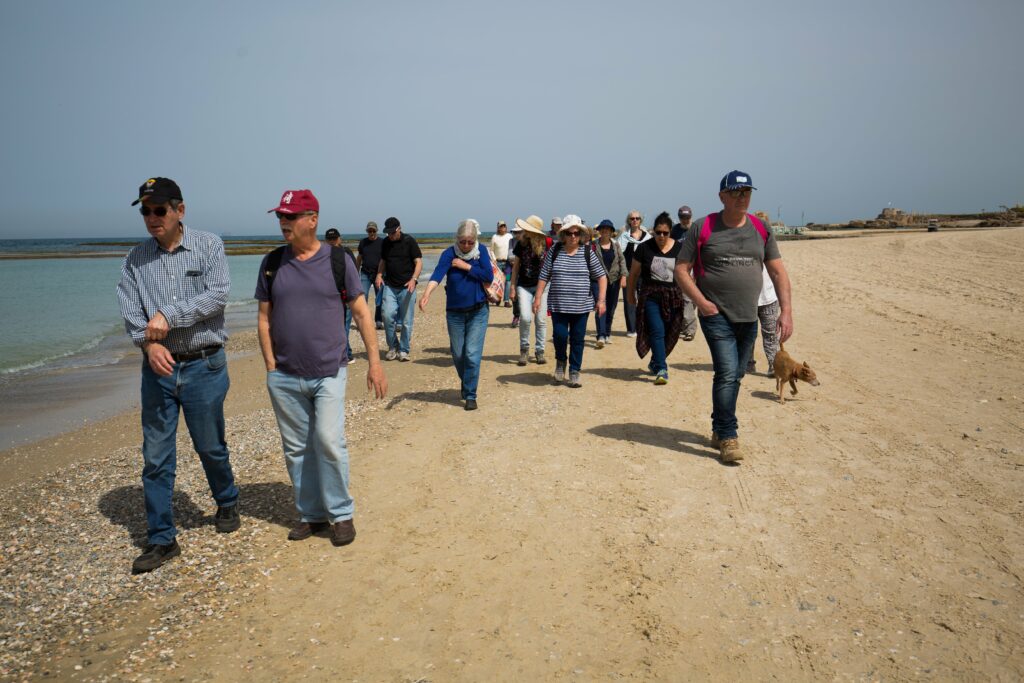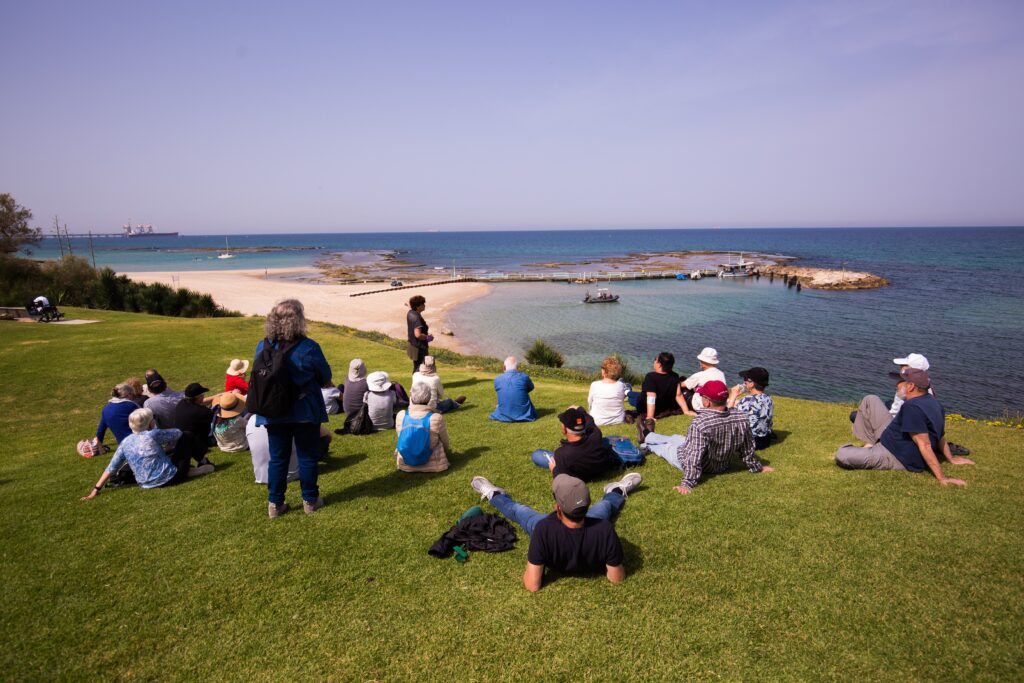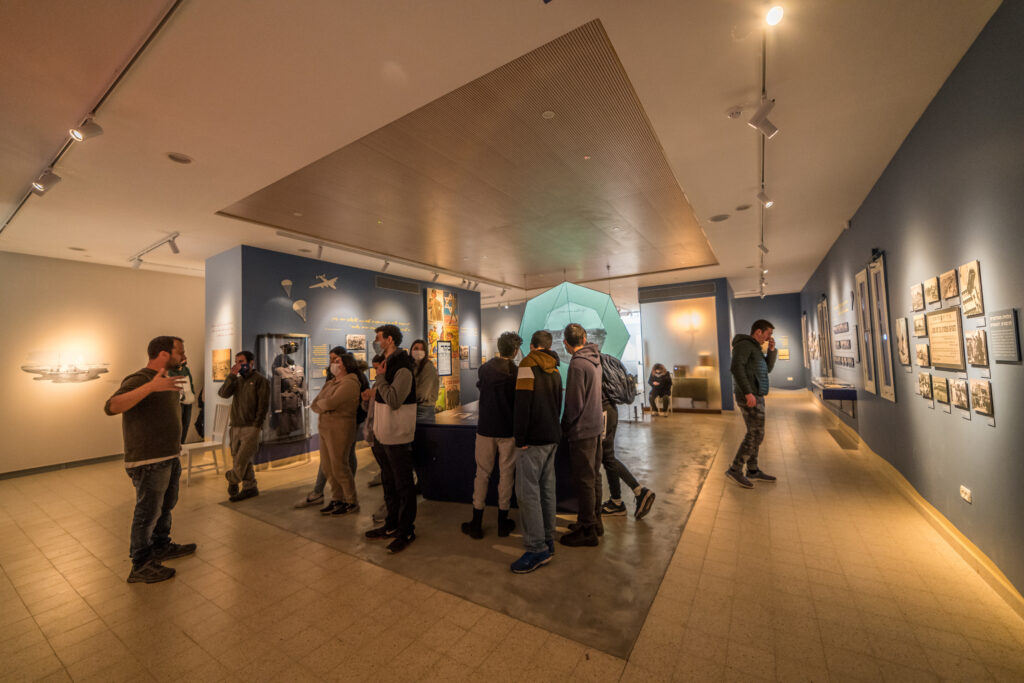"One thing is needed: Brave people without prejudices, who can and want to think for themselves."
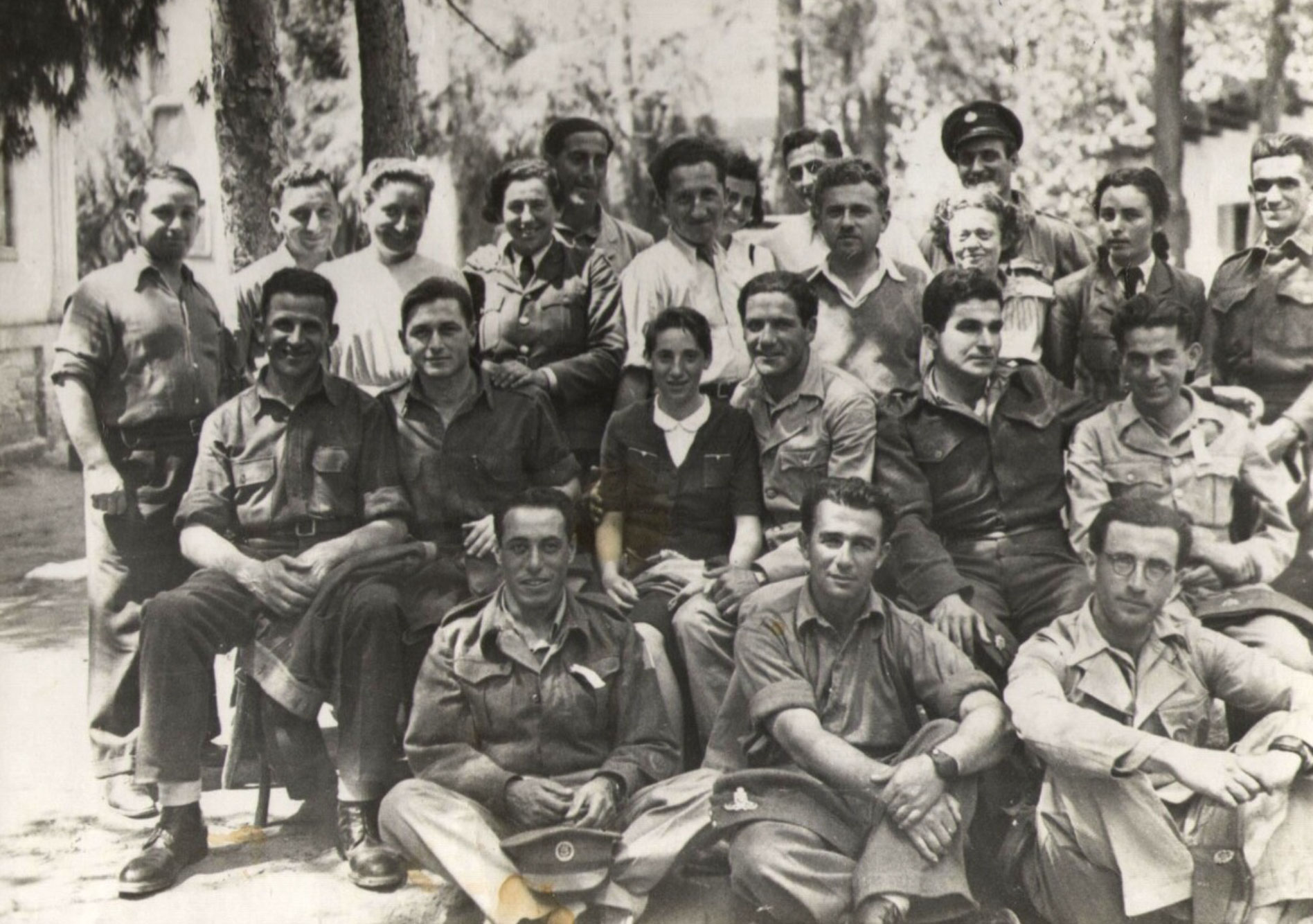
Members of the Paratroopers' Delegation in Slovakia with the Yishuv Leaders
The Jewish Parachutists of the Yishuv
From the beginning of the war, the leaders of the Jewish Yishuv considered it their duty to do something to help the endangered Jews of Europe. However, active participation of Jews from the Land of Israel in the actual fighting was conditional on consent and assistance from the British, who were against training Jewish fighters, who may later fight them in the Land of Israel. Nevertheless, the British needed Israeli young and skilled manpower. Urged by the Yishuv leadership, thousands of men and women volunteered for the British Army, most of whom served in supportive combat roles in the Land of Israel and North Africa.
At the end of November 1942, when the terrible rumors about what was happening in Europe were confirmed, public pressure on the leaders of the Yishuv to act with resolve to save the endangered Jews of Europe increased even more. Ben Gurion and his people’s incessant efforts to expand military cooperation with the British were classified, and thus, the public received from the leadership a misleading picture of apparent indifference, in face of the extermination of the Jews.
An opportunity for cooperation in Europe occurred in 1943. During the war, the British formed a network of agents whose job was to assist the local resistance movements and rescue aircrew members who survived aircrafts that were hit. After the bombing started in the oil fields of Romania, which resulted in the loss of many planes, the British needed agents that spoke Eastern European languages, and among the young people of the Jewish settlement, there were many who spoke Eastern European languages. The British agreed to the conditions stated by the “Haganah” commanders, to recruit their people and agree that operations in Europe would also include assistance to the Jews.
The collaboration resulted in the establishment of the “Jewish Paratroopers’ of the Yishuv Delegation”, which operated from Cairo under the command of Intelligence Officer Lieutenant Colonel Tony Simonds, commander of the Intelligence and Rescue Staff of the British Intelligence in Cairo, which was part of the S.O.E. Simonds, a non-Jew, was a fan of Zionism ever since he served in the Land of Israel as Ord Wingate’s lieutenant. He was well acquainted with the quality of the Haganah’s human resources and was deeply involved in the mobilization of Israeli forces for operations with British intelligence, although many of his commanders didn’t like the idea.
Two hundred and fifty young Jews, most of them members of kibbutzim, volunteered for the mission. One hundred and ten started training, yet only thirty-seven completed it successfully and eventually served as intelligence personnel and radio operators. The paratroopers were divided into groups according to their countries of origin, which became their countries of destination. Throughout 1944, paratroopers as groups and individuals reached some of their destinations. Most of them parachuted to their destination, some arrived by plane, and some went and returned several times.
Twelve parachutists were captured by the enemy. Five of them returned from captivity, three were executed, and four others were sent to concentration camps, where they perished.
The paratroopers’ mission in Europe served as a symbol of assistance and a message of encouragement and hope from the Jewish settlement in the Land of Israel to the Jews of Europe. The paratroopers were well aware that their chances of returning safely were slim, yet their conscience and faith wouldn’t allow them to continue to stand by idly in the face of such a terrible reality. Their mission became a symbol of resourcefulness and heroism, even when almost all hope was lost.
In June 29th, 1954, on the ten-year anniversary to the paratroopers’ delegation, leaders of the state gathered on the shores of the Sea of the Galilee in Kibbutz Ma’agan, for a memorial ceremony for the youngest paratrooper, Peretz Goldstein, who had perished in Europe. Approximately 2500 guests attended the ceremony, including Prime Minister Moshe Sharett, ministers, paratroopers, and members of the families.
The Aereo Club of Israel sent two light planes to the ceremony. One of them was meant to release a parachute with a card from the president of the state. The card was caught in the wheels of the plane, and when the pilot tried to release it, the plane crashed into the audience. Seventeen guests were killed in the Ma’agan Disaster, among them four of the paratroopers’ delegation – Dov Berger (Harari), Shalom Finzi, Yehuda Achishar (Gokobsky), and Arye Fichman. Among the casualties were paratrooper Enzo Sireni’s son and daughter-in-law. Enzo Sireni was killed in Italy.
